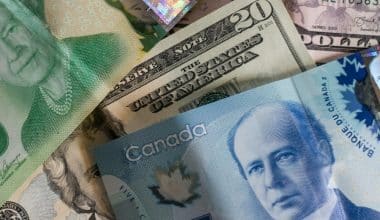Capital expenditure (CAPEX) is the amount of money spent by a company to develop its long-term assets or to buy new equipment. It is a powerful financial statistic that aids financial analysts in understanding a company’s investment trends.
Capital Expenditure Explained
Capital expenditure (CapEx) measures how much a firm invests in existing and new fixed assets to maintain or develop its business. CapEx is any sort of expense that a corporation capitalizes on or shows on its balance sheet as an investment rather than an expense on its income statement. Capitalizing an asset requires the corporation to spread the expense of the expenditure over the asset’s useful life.
The industry determines the amount of capital expenditures a company is likely to incur. Oil exploration and production, telecommunications, manufacturing, and utility businesses have the highest levels of capital expenditures.
CapEx can be found in the cash flow from the investing activities section of a company’s cash flow statement. Different companies use different terminology for capex, and an analyst or investor may hear it referred to as capital investment, purchases of property, plant, and equipment (PP&E), or acquisition expense.
Capital expenditures can also be calculated using data from a company’s income statement and balance sheet. Locate the amount of depreciation expense recorded for the current period on the income statement. Find the current period’s property, plant, and equipment line-item balance on the balance sheet.
Find the company’s prior-period PP&E balance and subtract the difference to find the change in the PP&E balance. To calculate the company’s current-period CapEx, add the change in PP&E to the current-period depreciation expense.
Capital Expenditure Categories
CapEx is classified as follows:
#1. CapEx on Tangible Assets
These are often physical, fixed, and non-consumable assets with a useful life of more than one accounting period. It includes the following:
Investment in land, property, or a structure, as well as maintenance, rehabilitation, and debt repayment.
Acquisition of manufacturing plant, machinery, and equipment, as well as repairs, upgrades, and depreciation expenditures
Vehicle purchases for transportation and distribution of commodities are another capital investment that includes maintenance, repair, and depreciation expenditures.
Purchase and installation of computers, laptops, and auxiliary devices, as well as maintenance costs
#2. CapEx on Intangible Assets
The cost of non-physical assets is realized over more than one fiscal year. These are also termed CapEx. It comprises the following:
- Software acquisition and upgrade,
- Obtaining patents and copyrights for technology, products, and services,
- A company’s goodwill paid when it acquires another enterprise,
In addition, there are license registration fees.
Accounting for Capital Expenditure
If the useful life of the acquired property exceeds the tax year, the cost must be capitalized. This cost is not added to the profit and loss statement all at once. Instead, this expense is spread out over the useful life of an asset through amortization and depreciation.
Here’s an illustration from Ford Motors of how CapEx affects financial statements:
#1. The Impact on the Balance Sheet
The entire capital expenditure cost is capitalized on the asset side of the balance sheet. As a result, the entity’s non-current assets increase. Simultaneously, CapEx diminishes the cash balance.
The highlighted items in the asset section represent capital expenditure.
#2. The Impact on the Income Statement
The capital expenditure costs are amortized or depreciated over the asset’s useful life using profit and loss statements.
#3. The Impact on the Cash Flow Statement
The drop in an entity’s cash balance is represented on the balance sheet at the conclusion of the fiscal year. As a result, this financial outflow is reflected in the cash flow statement. Furthermore, it is stated in the investment activities section, which includes the purchase of property, plants, and equipment.
How Do You Calculate Capital Expenditure?
The following steps are used to compute CapEx:
- Calculate the increased amount of property, plant, and equipment by subtracting the previous period’s total fixed assets from the current period’s aggregate.
- Find the total depreciation charged on fixed assets for the current period using the income statement. Find the amortization expense for intangible assets as well.
- To analyze CapEx, add P,P&E changes to the current period’s depreciation expense.
Difference Between Capital and Revenue Expenditures
CapEx focuses on long-term advantages. In contrast, revenue expenditure, also known as OpEx, is the expense of daily operations. This cost allows for the conversion of inventory into finished items.
Physical assets can be depreciated throughout their useful life, while non-physical assets can be amortized. However, for revenue expenditure, operating expenses must be accounted for in the same fiscal year.
Rent, wages, salary, utility bills, freight, and commission are all examples of revenue expenditures. The vast majority of capital expenditures are leveraged. In contrast, operating expenses under revenue expenditure are paid from the company’s working capital.
Capital Expenditure (CapEx) vs. Operating Expenses (OpEx)
Capital expenditure should not be confused with operating expenses (OpEx). Operating expenses are the short-term expenses required to cover the continuing operational costs of running a business. Unlike capital expenditures, operating expenses can be entirely deducted from the company’s taxes in the same year they occur.
In accounting terminology, an expense is deemed CapEx when the asset is a freshly purchased capital asset or an investment with a life of more than one year, or when the asset improves the usable life of an existing capital asset. If, on the other hand, the expense is one that keeps the asset in its current condition, such as a repair, the cost is normally deducted in full in the year the expense is spent.
An Example of CapEx
Here’s an example of how CapEx works. Assume ABC Company spent $7.46 billion on capital expenditures during the fiscal year, whereas XYZ Corporation spent $1.25 billion on PP&E at the same period. For the fiscal year, ABC Company and XYZ Corporation had cash flows from operations of $14.51 billion and $6.88 billion, respectively.
CF-to-CapEx is determined as follows:
CF/CapEx = Cash Flow from OperationsCapEx.
where:
- CF/CapEx is the cash flow to capital expenditure ratio.
- CF/CapEx = CapEx Cash Flow from Operations where:
- CF/CapEx is the cash flow to capital expenditure ratio.
Using this formula, ABC’s CF-to-CapEx is as follows:
$14.51 billion$7.46 billion = 1.94
$7.46 billion
$14.51 billion =1.94
XYZ’s CF-to-CapEx ratio is as follows:
$6.88 Billion$1.25 billion equals $5.49
$1.25 billion
$6.88 Billion = $5.49
It is vital to note that this is an industry-specific ratio that should only be compared to a ratio derived from another company with identical CapEx requirements.
What Type Of Investments Are CapEx?
CapEx refers to investments made by businesses to expand or maintain their operations. Unlike operating expenses, which are regular from year to year, capital expenditures are less predictable. For example, a corporation that purchases costly new equipment would classify the purchase as a capital expenditure. As a result, it would depreciate the cost of the equipment over the period of its useful life.
Is CapEx Tax Deductible?
Capital expenses are not directly tax deductible. They can, however, indirectly cut a company’s taxes through depreciation. For example, if a corporation spends $1 million on equipment with a useful life of ten years, it may include $100,000 in depreciation expense each year for ten years. This depreciation would cut the company’s pre-tax income by $100,000 per year, lowering its income taxes.
What Is the Difference Between CapEx and OpEx?
The primary distinction between capital expenditures and operating expenses is that operating expenses, such as rent, labor, and utility costs, occur on a regular and predictable basis. Capital expenses, on the other hand, occur significantly less frequently and with less consistency. Operating expenses are reflected on the income statement and are fully tax-deductible, but capital expenditures only decrease taxes through depreciation.
What Does CapEx Mean?
Capital expenditures (CapEx) are large purchases that are normally capitalized on a company’s balance sheet rather than expensed.
What Is an Example of CapEx?
When a firm purchases a vehicle to add to its fleet, the purchase is frequently capitalized and counted as CapEx. The vehicle’s cost is depreciated throughout its useful life, and the acquisition is originally reflected on the company’s balance sheet.
This is addressed differently from OpEx, such as the expense of filling up the vehicle’s gas tank. Because the gas tank has a substantially shorter useful life for the company, it is expensed immediately and counted as OpEx.
What Are The Types Of Capital Expenditure In Business?
- Property, Plant, and Equipment (PPE).
- Research and Development (R&D).
- Information Technology (IT).
- Intangible Assets.
- Mergers and Acquisitions (M&A).
- Infrastructure.
What Are the Two Main Sources Of Capital?
Debt and equity are the two basic forms of capital. Also see Capital Goods. Capital Structure.
What Are the Characteristics Of Capital Expenditure?
A capital expenditure is generally defined as an outlay incurred to increase revenue-generating capacity or lower manufacturing costs. They have a quality of permanence and a useful life or productive function that spans more than one accounting period.
Is Capital An Asset Or Liability?
Even when capital is invested in the form of cash and assets, it is still considered a liability. This is due to the fact that the firm is always obligated to return the owner of the capital. As a result, capital is always a liability to the organization from an accounting standpoint.
What Are The Determinants Of Capital Expenditure?
Financial independence ratio, PAD effectiveness ratio, and efficiency ratio are all examples of ratios. The activity ratio, fund, and SiLPA fund all have a substantial impact on capital spending at the same time.
What Are The Benefits Of Capital Expenditures?
The primary purpose of capital investment is to increase operations, generate income, or provide another economic advantage from the outlay. The majority of accounting and finance positions in commercial firms include monitoring and calculating capital expenditures.
How Do You Predict Capital Expenditure?
One of the simplest and most typical approaches for projecting capex is to use the historical capex ratio, which is the percentage of capex to sales or EBITDA. This strategy assumes that the company will continue to invest at a similar rate in relation to its sales or profitability in the future.
How Does Capital Expenditure Affect Economic Growth?
In contrast to Devarajan et al. (1996), Bose et al. (2007) discovered, using data from 30 developing countries, that the share of capital spending in GDP is positively associated with economic growth but the share of current expenditure does not have a strong association with economic growth.
Why Do Capital Expenditures Increase Assets?
Capital is for the long term, as in you invest capital in a business with the expectation that it will run for a long time. Revenue is, by definition, short-term. So, when you make a capital expenditure, it is bound to provide benefits for more than a year, which is why they build fixed assets.
- National Income Accounting: Definitive Guide for Beginners’ with Examples
- Interest Income: Definition and Process Of Taxable Interest Income
- Debt Service Coverage Ratio (DSCR): Examples, Formulas, & Examples
- What Are Fixed Expenses: Definition, Tips & Examples






